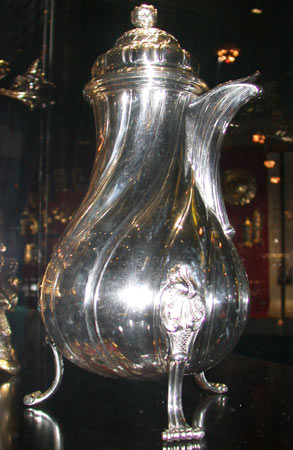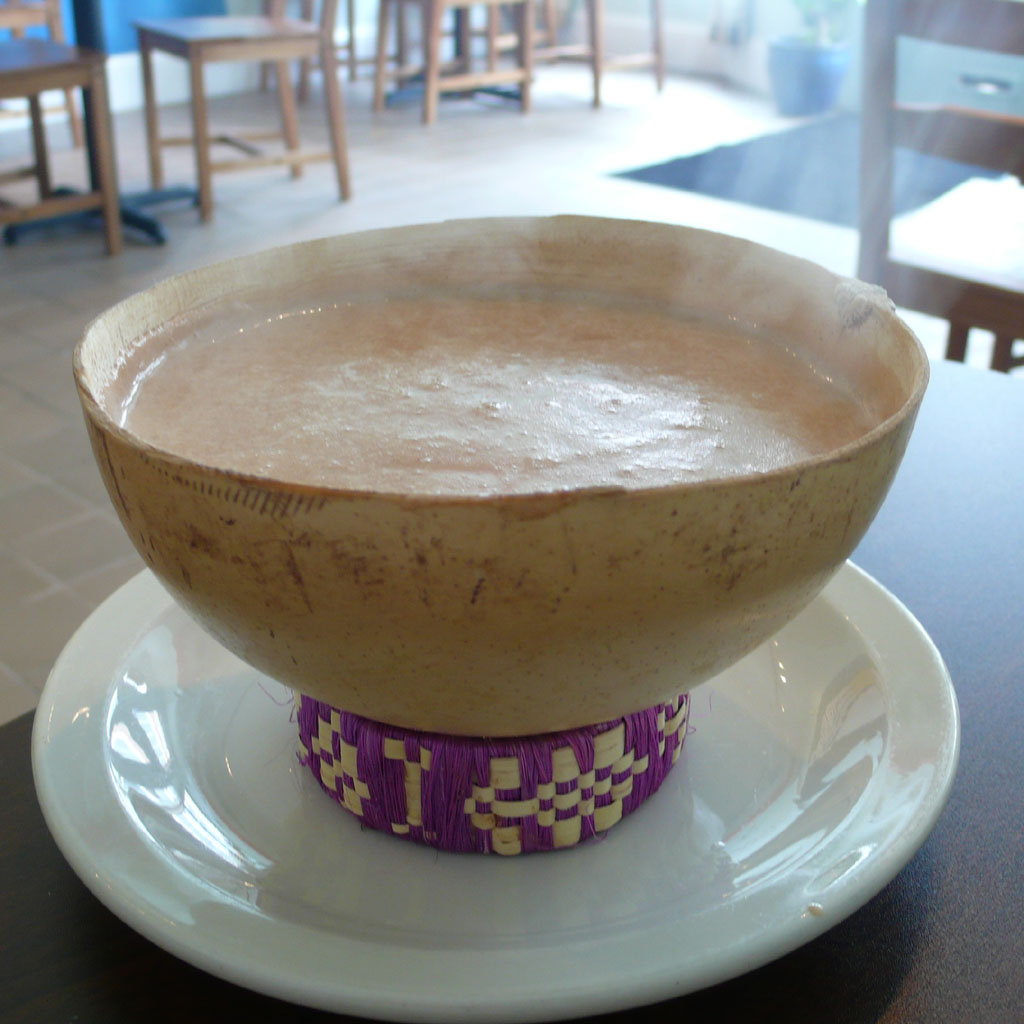|
Molinillo (whisk)
A ''molinillo'' is a traditional turned wood whisk used in Latin America, as well as the Philippines, where it is also called a ''batirol'' or ''batidor''. Its use is principally for the preparation of hot beverages such as hot chocolate, ''atole'', '' cacao'', and ''champurrado''. The molinillo is held between the palms and rotated by rubbing the palms together; this rotation creates the froth in the drink. This process is the subject of a popular children's nursery rhyme A nursery rhyme is a traditional poem or song for children in Britain and many other countries, but usage of the term dates only from the late 18th/early 19th century. The term Mother Goose rhymes is interchangeable with nursery rhymes. From t ... in Mexico. References External links Latin American cuisine Mexican cuisine Mexican food preparation utensils {{cooking-tool-stub ... [...More Info...] [...Related Items...] OR: [Wikipedia] [Google] [Baidu] |
Woodturning
Woodturning is the craft of using a wood lathe with hand-held tools to cut a shape that is symmetrical around the axis of rotation. Like the potter's wheel, the wood lathe is a simple mechanism that can generate a variety of forms. The operator is known as a turner, and the skills needed to use the tools were traditionally known as turnery. In pre-industrial England, these skills were sufficiently difficult to be known as 'the misterie' of the turners guild. The skills to use the tools by hand, without a fixed point of contact with the wood, distinguish woodturning and the wood lathe from the machinist's lathe, or metal-working lathe. Items made on the lathe include tool handles, candlesticks, egg cups, knobs, lamps, rolling pins, cylindrical boxes, Christmas ornaments, bodkins, knitting needles, needle cases, thimbles, pens, chessmen, spinning tops; legs, spindles, and pegs for furniture; balusters and newel A newel, also called a central pole or support column, is the cent ... [...More Info...] [...Related Items...] OR: [Wikipedia] [Google] [Baidu] |
Whisk
A whisk is a cooking utensil which can be used to blend ingredients smooth or to incorporate air into a mixture, in a process known as '' whisking'' or ''whipping''. Most whisks consist of a long, narrow handle with a series of wire loops joined at the end. The loops can have different shapes depending on a whisk's intended functions. The wires are usually metal, but some are plastic for use with nonstick cookware. Whisks are also made from bamboo. Whisks are commonly used to whip egg whites into a firm foam to make meringue, or to whip cream into whipped cream. History Bundles of twigs, typically apple, have long been used as whisks; often the wood used would lend a certain fragrance to the dish. An 18th-century Shaker recipe calls to "Cut a handful of peach twigs which are filled with sap at this season of the year. Clip the ends and bruise them and beat the cake batter with them. This will impart a delicate peach flavor to the cake." The bamboo whisk or ''chasen'' was ... [...More Info...] [...Related Items...] OR: [Wikipedia] [Google] [Baidu] |
Latin America
Latin America or * french: Amérique Latine, link=no * ht, Amerik Latin, link=no * pt, América Latina, link=no, name=a, sometimes referred to as LatAm is a large cultural region in the Americas where Romance languages — languages derived from Latin — are predominantly spoken. The term was coined in the nineteenth century, to refer to regions in the Americas that were ruled by the Spanish, Portuguese and French empires. The term does not have a precise definition, but it is "commonly used to describe South America, Central America, Mexico, and the islands of the Caribbean." In a narrow sense, it refers to Spanish America plus Brazil (Portuguese America). The term "Latin America" is broader than categories such as ''Hispanic America'', which specifically refers to Spanish-speaking countries; and ''Ibero-America'', which specifically refers to both Spanish and Portuguese-speaking countries while leaving French and British excolonies aside. The term ''Latin America'' was f ... [...More Info...] [...Related Items...] OR: [Wikipedia] [Google] [Baidu] |
Philippines
The Philippines (; fil, Pilipinas, links=no), officially the Republic of the Philippines ( fil, Republika ng Pilipinas, links=no), * bik, Republika kan Filipinas * ceb, Republika sa Pilipinas * cbk, República de Filipinas * hil, Republika sang Filipinas * ibg, Republika nat Filipinas * ilo, Republika ti Filipinas * ivv, Republika nu Filipinas * pam, Republika ning Filipinas * krj, Republika kang Pilipinas * mdh, Republika nu Pilipinas * mrw, Republika a Pilipinas * pag, Republika na Filipinas * xsb, Republika nin Pilipinas * sgd, Republika nan Pilipinas * tgl, Republika ng Pilipinas * tsg, Republika sin Pilipinas * war, Republika han Pilipinas * yka, Republika si Pilipinas In the recognized optional languages of the Philippines: * es, República de las Filipinas * ar, جمهورية الفلبين, Jumhūriyyat al-Filibbīn is an archipelagic country in Southeast Asia. It is situated in the western Pacific Ocean and consists of around 7,641 islands t ... [...More Info...] [...Related Items...] OR: [Wikipedia] [Google] [Baidu] |
Hot Chocolate
Hot chocolate, also known as hot cocoa or drinking chocolate, is a heated drink consisting of shaved chocolate, melted chocolate or cocoa powder, heated milk or water, and usually a sweetener like whipped cream or marshmallows. Hot chocolate made with melted chocolate is sometimes called drinking chocolate, characterized by less sweetness and a thicker consistency. The first chocolate drink is believed to have been created by the Maya around 2,500–3,000 years ago, and a cocoa drink was an essential part of Aztec culture by 1400 AD, by which they referred to as . The drink became popular in Europe after being introduced from Mexico in the New World and has undergone multiple changes since then. Until the 19th century, hot chocolate was used medicinally to treat ailments such as liver and stomach diseases. Hot chocolate is consumed throughout the world and comes in multiple variations, including the spiced of Latin America, the very thick served in Italy and served i ... [...More Info...] [...Related Items...] OR: [Wikipedia] [Google] [Baidu] |
Atole
''Atole'' (, from Nahuatl '' ātōlli'' ), also known as ''atolli'' and ''atol de elote'', is a traditional hot corn- and masa-based beverage of Mexican origin. Chocolate ''atole'' is known as ''champurrado'' or ''atole''. It typically accompanies tamales, and is very popular during Day of the Dead (observed November 2) and ''Las Posadas'' (Christmas holiday season). In Mexico In Mexico, the drink typically includes'' masa ''(corn hominy flour), water, ''piloncillo'' (unrefined cane sugar), cinnamon, vanilla, and optional chocolate or fruit. The mixture is blended and heated before serving. ''Atole'' is made by toasting ''masa'' on a ''comal'' (griddle), then adding water that was boiled with cinnamon sticks. The resulting blends vary in texture, ranging from a porridge to a very thin, liquid consistency. ''Atole'' can also be prepared with rice, wheat, or oatmeal in place of masa. In northern Mexico, a variation is also made using ''pinole'' (sweetened toasted corn meal). ... [...More Info...] [...Related Items...] OR: [Wikipedia] [Google] [Baidu] |
Cocoa Bean
The cocoa bean (technically cocoa seed) or simply cocoa (), also called the cacao bean (technically cacao seed) or cacao (), is the dried and fully fermented seed of ''Theobroma cacao'', from which cocoa solids (a mixture of nonfat substances) and cocoa butter (the fat) can be extracted. Cocoa beans are the basis of chocolate, and Mesoamerican foods including tejate, an indigenous Mexican drink that also includes maize, and pinolillo, a similar Nicaraguan drink made from a cornmeal & cocoa powder. Etymology The word ''cocoa'' comes from the Spanish word , which is derived from the Nahuatl word . The Nahuatl word, in turn, ultimately derives from the reconstructed Proto-Mixe–Zoquean word ''kakawa''. Used on its own, the term ''cocoa'' may also mean: * Hot cocoa, the drink more known as ''hot chocolate'' Terms derived from ''cocoa'' include: * Cocoa paste, ground cocoa beans: the mass is melted and separated into: ** Cocoa butter, a pale, yellow, edible fat ** Cocoa s ... [...More Info...] [...Related Items...] OR: [Wikipedia] [Google] [Baidu] |
Champurrado
Champurrado is a chocolate-based ''atole'', a warm and thick Mexican beverage. It is prepared with either '' masa de maíz'' (lime-treated corn dough),'' masa harina'' (a dried version of this dough), or corn flour (simply very finely ground dried corn, especially local varieties grown for ''atole''); ''piloncillo''; water or milk; and occasionally containing cinnamon, anise seed, or vanilla. Ground nuts, orange zest, and egg can also be added to thicken and enrich the drink. ''Atole'' drinks are whipped up using a wooden whisk called a '' molinillo''. The whisk is rolled between the palms of the hands, then moved back and forth in the mixture until it is aerated and frothy; a blender may also be used. Champurrado is traditionally served with ''churros'' in the morning as a simple breakfast or as a late afternoon snack. Champurrado is also very popular during Day of the Dead and at ''Las Posadas'' (during the Christmas season), where it is served alongside ''tamales''. Cham ... [...More Info...] [...Related Items...] OR: [Wikipedia] [Google] [Baidu] |
Froth
Foams are materials formed by trapping pockets of gas in a liquid or solid. A bath sponge and the head on a glass of beer are examples of foams. In most foams, the volume of gas is large, with thin films of liquid or solid separating the regions of gas. Soap foams are also known as suds. Solid foams can be closed-cell or open-cell. In closed-cell foam, the gas forms discrete pockets, each completely surrounded by the solid material. In open-cell foam, gas pockets connect to each other. A bath sponge is an example of an open-cell foam: water easily flows through the entire structure, displacing the air. A sleeping mat is an example of a closed-cell foam: gas pockets are sealed from each other so the mat cannot soak up water. Foams are examples of dispersed media. In general, gas is present, so it divides into gas bubbles of different sizes (i.e., the material is polydisperse)—separated by liquid regions that may form films, thinner and thinner when the liquid phase drain ... [...More Info...] [...Related Items...] OR: [Wikipedia] [Google] [Baidu] |
Nursery Rhyme
A nursery rhyme is a traditional poem or song for children in Britain and many other countries, but usage of the term dates only from the late 18th/early 19th century. The term Mother Goose rhymes is interchangeable with nursery rhymes. From the mid-16th century nursery rhymes begin to be recorded in English plays, and most popular rhymes date from the 17th and 18th centuries. The first English collections, ''Tommy Thumb's Song Book'' and a sequel, ''Tommy Thumb's Pretty Song Book'', were published by Mary Cooper (publisher), Mary Cooper in 1744. Publisher John Newbery's stepson, Thomas Carnan, was the first to use the term Mother Goose for nursery rhymes when he published a compilation of English rhymes, ''Mother Goose's Melody, or, Sonnets for the Cradle'' (London, 1780). History Lullabies The oldest children's songs of which we have records are Lullaby, lullabies, intended to help a child fall asleep. Lullabies can be found in every human culture. The English term lullaby i ... [...More Info...] [...Related Items...] OR: [Wikipedia] [Google] [Baidu] |






